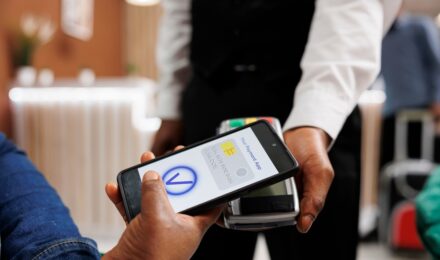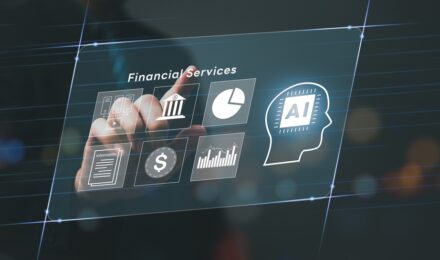As household debt in the United States continues to climb past historic highs, millions of Americans are seeking ways to simplify repayments and reduce interest costs. Debt consolidation remains one of the most popular strategies, particularly through the use of personal loans. Yet in 2025, with interest rates, credit access, and financial technologies in flux, the question deserves a fresh examination: is using a personal loan still the smartest way to consolidate debt?
This article explores the current state of debt consolidation, compares alternatives, and analyzes whether personal loans remain the most effective tool in today’s financial environment.
The Debt Landscape in 2025
Consumer debt has grown sharply over the past two years, driven by inflation, higher living costs, and a surge in credit card balances. According to the Federal Reserve’s 2025 consumer credit report, revolving debt surpassed $1.3 trillion, a record level. Average credit card APRs now exceed 22%, making it increasingly expensive to carry balances month after month.
This environment has created strong demand for consolidation options, particularly those that can reduce interest charges and simplify repayment into a single monthly installment. Personal loans have long filled this role, but new tools — such as buy-now-pay-later (BNPL) platforms and home equity borrowing — are gaining traction.
How Personal Loan Consolidation Works
When a borrower takes out a personal loan to consolidate debt, they essentially replace multiple high-interest accounts with a fixed-rate installment loan. The benefits typically include two major features:
- Lower Interest Rates: Borrowers with strong credit scores can still access personal loans with rates between 8% and 15%, far below current credit card APRs.
- Predictable Repayment: Unlike revolving debt, personal loans offer fixed terms, usually between 24 and 60 months, giving borrowers a clear payoff timeline.
These features continue to make personal loans attractive in 2025, but they are not universally beneficial. Eligibility and rate offers vary widely depending on credit scores, debt-to-income ratios, and lender policies.
Alternatives to Personal Loan Consolidation
While personal loans remain a leading choice, other strategies are increasingly relevant. Balance transfer credit cards are still available, though fewer issuers are offering long-term 0% APR promotions in the current high-rate environment. For homeowners, equity loans or home equity lines of credit provide another option, but borrowing against property has become riskier due to market volatility. Nonprofit credit counseling agencies also provide debt management plans, where repayment is bundled and interest rates may be reduced through negotiation. These approaches compete directly with personal loans, but each comes with trade-offs.
Advantages of Personal Loan Consolidation in 2025
Personal loans stand out for a few reasons that remain highly relevant in 2025:
- They are unsecured, meaning borrowers do not risk assets such as their homes.
- Many fintech lenders now provide quick, digital-first application processes with prequalification tools, which makes borrowing more convenient than traditional bank lending.
These qualities make personal loans flexible and appealing, particularly for borrowers who value speed, transparency, and simplicity.
Risks and Drawbacks to Consider
Despite their advantages, personal loans are not without downsides. For borrowers with weaker credit, interest rates can exceed 30%, often erasing the savings compared to credit cards. Origination fees, which commonly range from 1% to 8% of the loan amount, add to the cost and may reduce the overall benefit of consolidating. Finally, there is the behavioral risk: without addressing spending habits, borrowers may pay off their cards with a loan only to run up balances again, leaving them deeper in debt.
Future Outlook: Technology and Regulation
The landscape for personal loans is evolving rapidly. Lenders are integrating artificial intelligence into underwriting decisions, which could expand access for individuals with limited credit histories. At the same time, regulators are monitoring fintech lenders more closely to ensure fair practices and transparency. These changes may reshape how borrowers access and experience consolidation loans over the next several years.
When a Personal Loan Still Makes Sense
In 2025, personal loans remain a practical consolidation tool for certain borrowers. They are most effective for those with good to excellent credit, who can secure interest rates far below their existing credit card balances. They also work well for individuals who prefer a structured, fixed repayment plan and who do not have access to lower-cost secured borrowing. For others, particularly those struggling with discipline around spending, nonprofit debt management programs may be the safer path.
Conclusion
Debt consolidation remains a vital strategy for millions of Americans in 2025, and personal loans continue to play a central role. While rising rates and new competitors have complicated the landscape, personal loans still offer predictability, structure, and potential cost savings. The key is careful evaluation: borrowers must compare all available options, calculate the true cost of consolidation, and pair the strategy with strong budgeting habits to avoid slipping back into debt.
References
- Federal Reserve – Consumer Credit Report
- Consumer Financial Protection Bureau – Personal Loans Guidance
- National Foundation for Credit Counseling – Debt Management Plans
- Experian – Average Personal Loan Interest Rates 2025
As household debt in the United States continues to climb past historic highs, millions of Americans are seeking ways to simplify repayments and reduce interest costs. Debt consolidation remains one of the most popular strategies, particularly through the use of personal loans. Yet in 2025, with interest rates, credit access, and financial technologies in flux, the question deserves a fresh examination: is using a personal loan still the smartest way to consolidate debt?
This article explores the current state of debt consolidation, compares alternatives, and analyzes whether personal loans remain the most effective tool in today’s financial environment.
The Debt Landscape in 2025
Consumer debt has grown sharply over the past two years, driven by inflation, higher living costs, and a surge in credit card balances. According to the Federal Reserve’s 2025 consumer credit report, revolving debt surpassed $1.3 trillion, a record level. Average credit card APRs now exceed 22%, making it increasingly expensive to carry balances month after month.
This environment has created strong demand for consolidation options, particularly those that can reduce interest charges and simplify repayment into a single monthly installment. Personal loans have long filled this role, but new tools — such as buy-now-pay-later (BNPL) platforms and home equity borrowing — are gaining traction.
How Personal Loan Consolidation Works
When a borrower takes out a personal loan to consolidate debt, they essentially replace multiple high-interest accounts with a fixed-rate installment loan. The benefits typically include two major features:
- Lower Interest Rates: Borrowers with strong credit scores can still access personal loans with rates between 8% and 15%, far below current credit card APRs.
- Predictable Repayment: Unlike revolving debt, personal loans offer fixed terms, usually between 24 and 60 months, giving borrowers a clear payoff timeline.
These features continue to make personal loans attractive in 2025, but they are not universally beneficial. Eligibility and rate offers vary widely depending on credit scores, debt-to-income ratios, and lender policies.
Alternatives to Personal Loan Consolidation
While personal loans remain a leading choice, other strategies are increasingly relevant. Balance transfer credit cards are still available, though fewer issuers are offering long-term 0% APR promotions in the current high-rate environment. For homeowners, equity loans or home equity lines of credit provide another option, but borrowing against property has become riskier due to market volatility. Nonprofit credit counseling agencies also provide debt management plans, where repayment is bundled and interest rates may be reduced through negotiation. These approaches compete directly with personal loans, but each comes with trade-offs.
Advantages of Personal Loan Consolidation in 2025
Personal loans stand out for a few reasons that remain highly relevant in 2025:
- They are unsecured, meaning borrowers do not risk assets such as their homes.
- Many fintech lenders now provide quick, digital-first application processes with prequalification tools, which makes borrowing more convenient than traditional bank lending.
These qualities make personal loans flexible and appealing, particularly for borrowers who value speed, transparency, and simplicity.
Risks and Drawbacks to Consider
Despite their advantages, personal loans are not without downsides. For borrowers with weaker credit, interest rates can exceed 30%, often erasing the savings compared to credit cards. Origination fees, which commonly range from 1% to 8% of the loan amount, add to the cost and may reduce the overall benefit of consolidating. Finally, there is the behavioral risk: without addressing spending habits, borrowers may pay off their cards with a loan only to run up balances again, leaving them deeper in debt.
Future Outlook: Technology and Regulation
The landscape for personal loans is evolving rapidly. Lenders are integrating artificial intelligence into underwriting decisions, which could expand access for individuals with limited credit histories. At the same time, regulators are monitoring fintech lenders more closely to ensure fair practices and transparency. These changes may reshape how borrowers access and experience consolidation loans over the next several years.
When a Personal Loan Still Makes Sense
In 2025, personal loans remain a practical consolidation tool for certain borrowers. They are most effective for those with good to excellent credit, who can secure interest rates far below their existing credit card balances. They also work well for individuals who prefer a structured, fixed repayment plan and who do not have access to lower-cost secured borrowing. For others, particularly those struggling with discipline around spending, nonprofit debt management programs may be the safer path.
Conclusion
Debt consolidation remains a vital strategy for millions of Americans in 2025, and personal loans continue to play a central role. While rising rates and new competitors have complicated the landscape, personal loans still offer predictability, structure, and potential cost savings. The key is careful evaluation: borrowers must compare all available options, calculate the true cost of consolidation, and pair the strategy with strong budgeting habits to avoid slipping back into debt.







